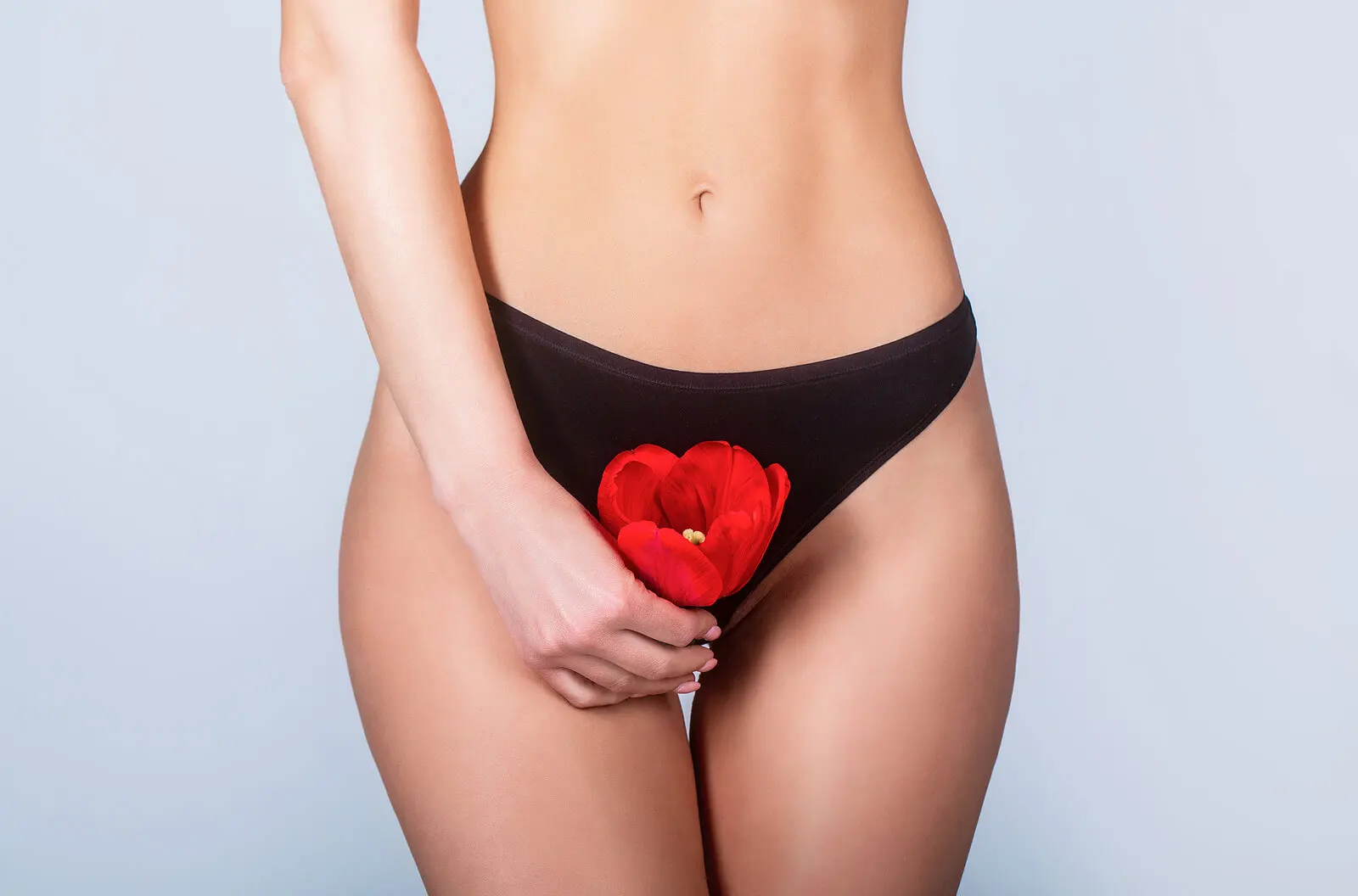Free Bleeding: What Is It and How to Practice It?


Reviewed and approved by the nurse Leidy Mora Molina
Free bleeding is a worldwide trend that has been promoted, in particular, by feminist movements. It has to do with renouncing the use of hygienic products to collect menstrual fluid and, instead, practicing the control of menstrual evacuation.
Those who defend this practice suggest that just as it’s possible to control the outflow of urine or feces, it’s also possible to learn to regulate the outflow of menstrual blood. This would make it unnecessary to use menstrual cups, pads, tampons, etc.
Why change traditions? Many people think that women feel repressed and fearful of menstruation and the possibility of it being visible to others. They also feel that the use of sanitary products is uncomfortable and unsafe. Free bleeding would be a way to break this conditioning.
Some clarifications about menstrual bleeding
Before talking about free bleeding, it’s useful to make some clarifications about menstruation. The first thing to take into account is that during the period there’s no permanent bleeding. The uterus is closed and only opens at certain times to evacuate the fluid.
The outflow occurs after a uterine contraction. However, some women – especially Western women – have been educated to use sanitary products. Given this custom, no attention is paid to the movements of the uterus that precede the bleeding.
However, just as a person learns to detect the sensation of fullness in the bladder and to perform controlled actions to empty it, it’s also possible to learn to detect the moment when the uterus will release the flow, and to control that evacuation. That’s what free bleeding is all about.

What is free bleeding?
Free bleeding is the practice of not using any intimate hygiene products to collect blood during menstruation. It’s often encouraged by feminist movements and is considered a form of women’s empowerment.
The trend was born in the 1970s, initially as a response to “toxic shock“, an infection caused by bacteria, which, in some cases, is associated with the use of super-absorbent tampons and even menstrual cups. Such a shock is a medical emergency that can be life-threatening.
On the other hand, free bleeding is considered a political position. First, in the 21st century, there’s no need for secrecy and rejection of female bleeding. Secondly, money is required to purchase intimate products and not all women can afford them.
Menstruation is a natural and healthy process. It doesn’t have to be surrounded by fears and taboos. Because of this, well-known figures such as Kiran Gandhi, during the London Marathon in 2014, let her bleeding show while running. She used the blood as a symbol of empowerment.
You might also be interested in: 5 Remedies to Regulate Your Period
How does it take place?
Free bleeding is not about staining clothes, but about acquiring the ability to retain menstrual flow and then expel it voluntarily. However, if any garment is stained, it shouldn’t be taken as a tragedy.
Control over bleeding isn’t achieved overnight. You must learn to listen to your body’s signals, i.e., the contractions of the uterus that announce bleeding. It’s also necessary to develop the ability to hold back the flow until it is possible to evacuate it. All this needs a lot of practice.
Sensations are experienced in the uterus, cervix, vagina, and vulva. The best thing to do is to make a mental and emotional connection with these organs. That is, to become sensitive to the signals they send. The rest is like learning to urinate. The following are practices that help to achieve this goal.
Meditation and self-control
Meditation techniques are of great help in sensitizing oneself to one’s own body. They help to develop sufficient introspection to detect sensations in detail.
Such self-awareness also facilitates self-control, which shouldn’t be confused with “holding on” or “holding back,” but with directing the body with the mind.
Kegel exercises
Kegel exercises play the role of strengthening and controlling the muscles of the pelvic area. A strong pelvic floor is very important to control the outflow of menstrual flow.
These exercises aren’t only very valuable to manage free bleeding well, but also to improve sex life and make childbirth easier.
Read more here: Is it Normal to Have Blood Clots During Your Period?
Change of mentality
Free bleeding doesn’t make sense if you don’t change your mentality towards menstruation. The idea that menstrual blood is dirty, disgusting, or should be hidden must be left behind. It’s important to learn to see the period as a healthy and natural event, which doesn’t have to severely condition a woman.
Benefits of free bleeding
The main benefit of free bleeding is to give back to menstruation its character as a healthy process, free of taboos. Through this, the feminine world is also vindicated and the margin of freedom for women, who often feel constrained by menstruation, is widened.
Other benefits are the following:
- Promotes gynecological health. Strengthening the pelvic floor, essential for free bleeding, improves the functioning of the female reproductive system and prevents other problems such as urinary incontinence.
- Improved perspiration of the intimate area. The absence of hygienic products makes it easier.
- Reduced risk of allergic reactions. Some hygienic products cause allergies in some women.
- A greater sense of control over one’s own body.

Some tips for practicing free bleeding
It’s important to choose the right time to start practicing free bleeding. It’s best to take advantage of vacations or times when you can stay at home. It’s best to have a bathroom nearby, as when you start trying the practice, it won’t be possible to retain the menstrual flow for a long time.
Menstrual panties are also a great help at the beginning. They’re an accessory that allows you to get rid of tampons, cups or pads, and, at the same time, practice free bleeding without any consequences for any involuntary loss.
The first thing is to learn to identify body sensations. Once this is achieved, try to hold back the menstrual flow. Kegel exercises are ideal to achieve this. Afterwards, it’s enough to go to the bathroom and let the bleeding flow.
Final recommendations
Free bleeding can be practiced by any woman and has no risk whatsoever. It’s more a matter of mentality. Everyone is capable of developing the self-control necessary to voluntarily withhold menstrual flow, unless there’s a diagnosed anatomical problem.
Each woman is free to choose the way she wants to experience her period. Ideally, that choice should make her feel comfortable and confident. Free bleeding is an accessible, healthy, and liberating alternative.
All cited sources were thoroughly reviewed by our team to ensure their quality, reliability, currency, and validity. The bibliography of this article was considered reliable and of academic or scientific accuracy.
- Thiyagarajan DK, Basit H, Jeanmonod R. Physiology, Menstrual Cycle. [Updated 2021 Oct 30]. In: StatPearls [Internet]. Treasure Island (FL): StatPearls Publishing; 2022 Jan-. Available from: https://www.ncbi.nlm.nih.gov/books/NBK500020/
- Ginsburg, R., & Tavella, M. E. “Ni lo menciones, querida”: cultura material de tampones y toallitas: Traducción de: Ginsburg, R. (1996). “Don’t tell, dear”: The material culture of tampons and napkins. Journal of Material Culture, Vol. 1 (3), pp. 365-375. Estados Unidos: Sage Publications. Etcétera. Revista del Área de Ciencias Sociales del CIFFyH, (7).
- Felitti, K. (2016). El ciclo menstrual en el siglo XXI. Entre el mercado, la ecología y el poder femenino. Sexualidad, Salud y Sociedad (Rio de Janeiro), 175-208.
This text is provided for informational purposes only and does not replace consultation with a professional. If in doubt, consult your specialist.








